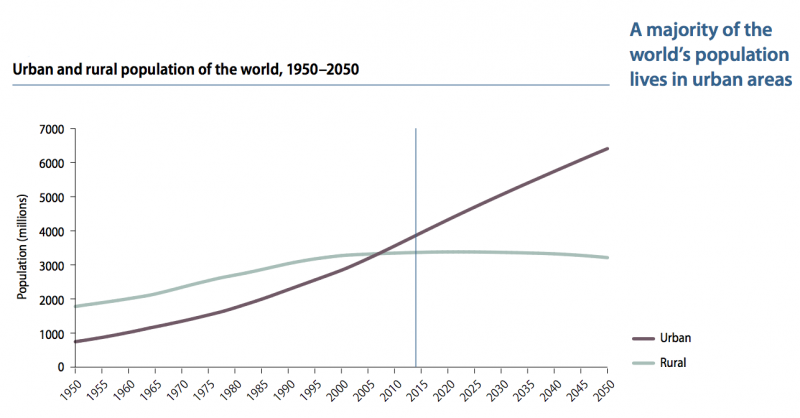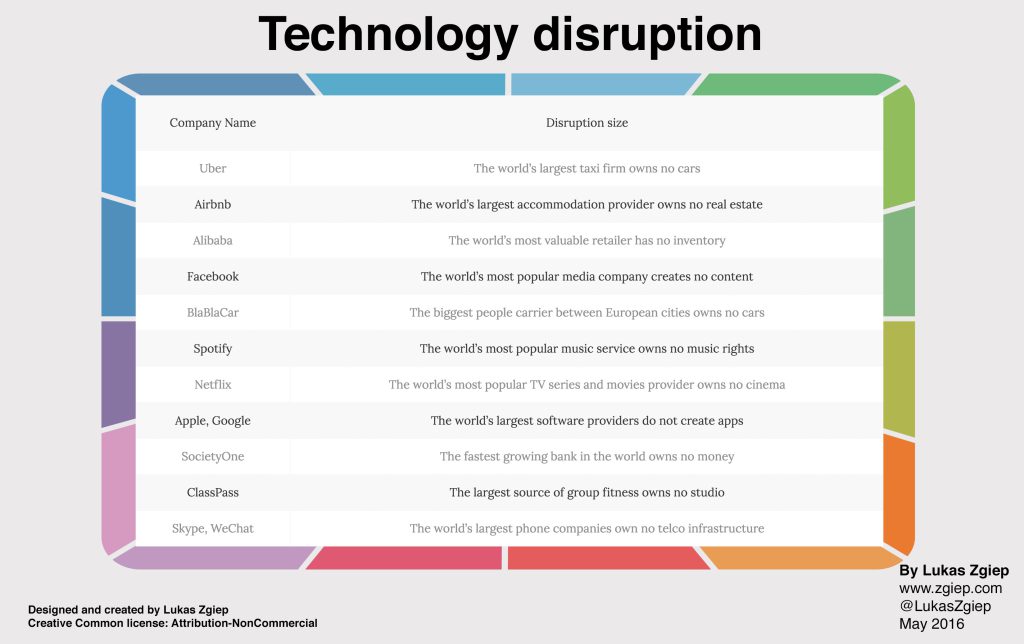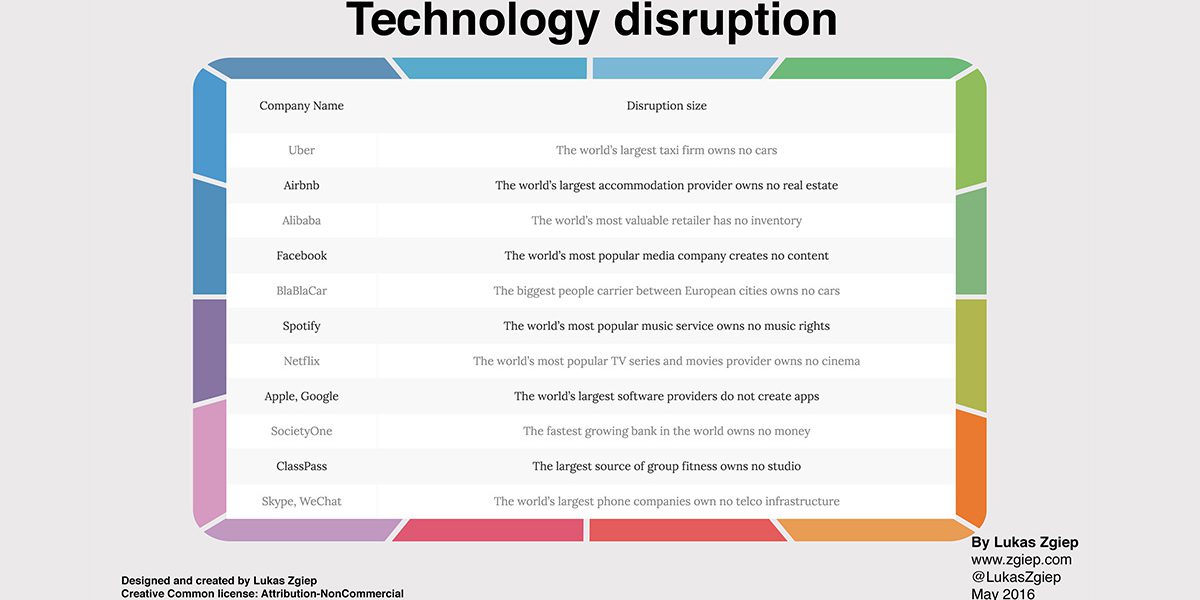When Facebook arrived in Poland in 2007-2009, many people asked questions: Is it something bigger or just a fad? When will it end? Today, from the perspective of these few years, I say that Facebook itself can, in a sense, be called part of the collaborative economy – it revolutionized the media industry thanks to technology – which in those years became available to the masses. From the one-to-many model, the media industry (and with it the advertising industry) has become a many-to-many model. Each of us can communicate, send content, and provide information in the blink of an eye. For a long time, I have not heard the question if and when Facebook will fall, it is as if someone asked if and when Google will fall? It can be said that they are too big organizations to fail, but there is something else … Both Facebook and Google have learned to buy companies that could directly or indirectly threaten them in the future, e.g. Facebook bought Instagram for $ 1 billion in 2012 – I remember that in 2012 this amount made a great impression, while two years later Facebook tried to take over Snapchat for $ 3 billion and acquired WhatsApp for $ 19 billion. In total, Google has officially taken over almost 200 companies so far, and Facebook has taken over 50, and it will definitely not end there. The development of social media is a very important element of the collaborative economy, it is thanks to them that people have learned how to communicate easily, quickly and effectively with each other via the Internet, and later on smartphones.
The second factor that contributed to the dynamic development of the collaborative economy in the world was the economic crisis in 2008 caused by the crash on the US real estate market. The United States was hardest hit by the crisis, but more or less it was felt all over the world. During this crisis, Poland was called a green island – we were the only EU country that was not “hit” by the recession. We also got hit, but thanks to huge subsidies from the EU we managed to keep GDP above the mark. What are people doing in times of crisis? They save. How? Since their income is not growing, they wonder how they can use their resources more efficiently. Collaborative economy services could not have had a better time for their dynamic development. Of course, economic crises have erupted many times in the history of the world, but this one in 2008 was the first in which the Internet, social media and smartphones were so widespread. The 2008 crisis was an intense catalyst that significantly accelerated the development of the collaborative economy around the world.
Demographic changes and socio-cultural aspects also significantly affect the rate of increase in the number of goods and services offered in the model of cooperation economy development. Generation X is beginning to give way to Generation Y. People born between 1980 and 1999 begin to have a greater influence in every area of the economy than those born earlier. It is worth emphasizing that the degree of digital (IT) education of these generations differs significantly to the benefit of Generation Y. According to a study conducted by Goldman Sachs in 2015, Generation X has become the most numerous and most important group in the United States from the point of view of purchasing power.
Due to the population density, collaboration within the collaborative economy develops much faster in urban areas – a larger population in a given area makes collaboration between stakeholders more likely. Services such as car-sharing, bike-sharing, ride-sharing, and home-sharing are currently only possible in cities, due to the relatively high demand in a relatively small area and ease of access. The dynamically progressing urbanization (not only in Poland but also around the world) creates favorable conditions for developing the collaborative economy. In 2007, for the first time in world history, more people lived in cities than in villages, and according to the current UN forecasts, this trend will continue – in 2050 the number of people living in cities will be twice as high as the number of people living in the countryside.

World population in cities and villages in 1950-2050
Source: United Nations: World Urbanization Prospects Report
The above factors, which overlapped in the last 10 years, made the development of the cooperation economy both in Poland and in the world very dynamic. By using resources more efficiently, it contributes to sustainable development including sustainable production. The collaborative economy is currently undergoing rapid development and more research is needed to gain a deeper understanding of it.

The table presents many examples of how consumers and prosumers quickly noticed the benefits of using platforms functioning, among others. in the collaborative economy model. If a good or service meets a need (at least as good) at a lower cost, chances are good that more and more people will use it. It should be emphasized that an increasing number of people are becoming prosumers by sharing information about products and services, which significantly contributes to the increase in the pace of development of entities and values in the cooperation economy. Some areas of the collaborative economy would not arise without the active participation of prosumers who deliver their goods and services to the market.
Cheers,
LSZ

